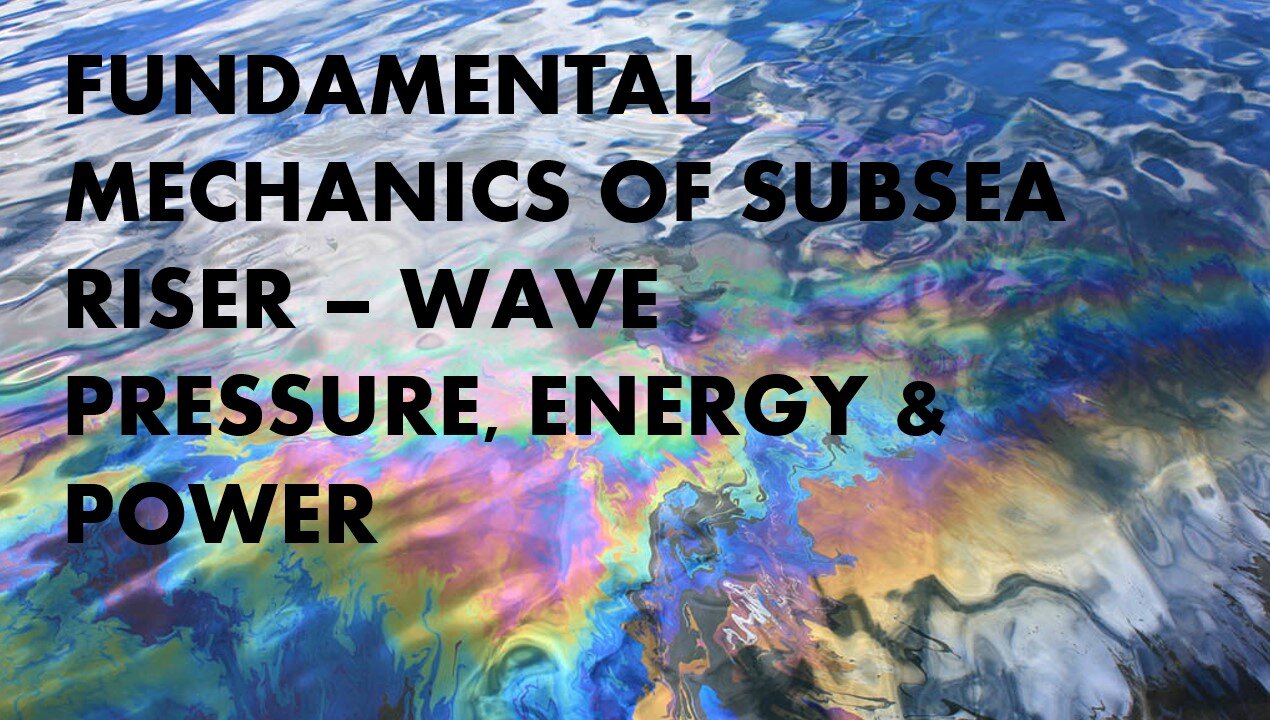Premium Only Content

Fundamental Mechanics of Subsea Riser - Wave Pressure, Energy & Power Online Course
The amount of energy in a wave is related to its amplitude and its frequency. Large-amplitude earthquakes produce large ground displacements. Loud sounds have high-pressure amplitudes and come from larger-amplitude source vibrations than soft sounds. Large ocean breakers churn up the shore more than small ones. Consider the example of the seagull and the water wave, work is done on the seagull by the wave as the seagull is moved up, changing its potential energy. The larger the amplitude, the higher the seagull is lifted by the wave and the larger the change in potential energy.
The energy of the wave depends on both the amplitude and the frequency. If the energy of each wavelength is considered to be a discrete packet of energy, a high-frequency wave will deliver more of these packets per unit time than a low-frequency wave. We will see that the average rate of energy transfer in mechanical waves is proportional to both the square of the amplitude and the square of the frequency. If two mechanical waves have equal amplitudes, but one wave has a frequency equal to twice the frequency of the other, the higher-frequency wave will have a rate of energy transfer a factor of four times as great as the rate of energy transfer of the lower-frequency wave.
For full videos you can visit this link :
https://drive.google.com/file/d/1TKU6mKAZ2LLf_tR6s_xM4VHnpNrewX1N/view?usp=drive_link
and you will be directed to a google drive link where you can download all files of this course
https://drive.google.com/file/d/1CxCxno70xG1o_ydTK2Ekv25YQedQ5YaE/view?usp=drive_link
-
 LIVE
LIVE
Graham Allen
1 hour agoTrump BULLIES Colombia Into Following His Policy!! + FINALLY PETE IS CONFIRMED!
7,112 watching -
 LIVE
LIVE
Matt Kohrs
7 hours agoMARKETS CRASH: The DeepSeek Panic || The MK Show
1,831 watching -
 LIVE
LIVE
BonginoReport
1 hour agoTrump Alpha-Males Colombia (Ep.126) - 01/27/2025
11,806 watching -
 LIVE
LIVE
Jeff Ahern
1 hour agoMonday Madness with Jeff Ahern (6am Pacific)
511 watching -
 1:21:30
1:21:30
Game On!
9 hours ago $0.02 earnedPatrick Mahomes does it AGAIN!
4691 -
 15:20
15:20
Misha Petrov
1 hour agoReacting To Liberal MELTDOWNS Over Trump’s Return - Gen Z Is Planning a REVOLUTION?!
14.3K10 -
 18:22
18:22
Neil McCoy-Ward
2 hours agoThe 🇨🇴 Colombian President Just Learned The HARD WAY!!! (Another Win For The USA 🇺🇸)
5398 -
 1:56:04
1:56:04
TheDozenPodcast
17 hours agoMass deportations, Islamists, Saving the UK: Nick Tenconi
17.7K18 -
 35:24
35:24
Survive History
21 hours ago $9.10 earnedCould You Survive in a Cavalry Regiment During the English Civil War?
81.1K8 -
 28:15
28:15
Degenerate Plays
16 hours ago $4.07 earnedTwo Birds' Secret Meeting - Gotham Knights : Part 26
64.3K5